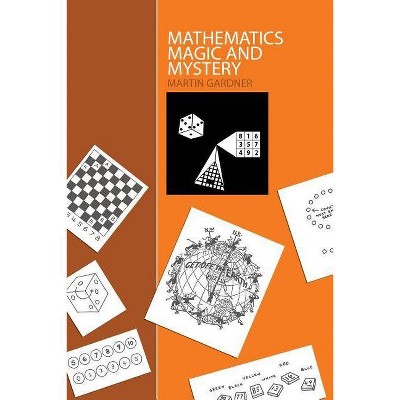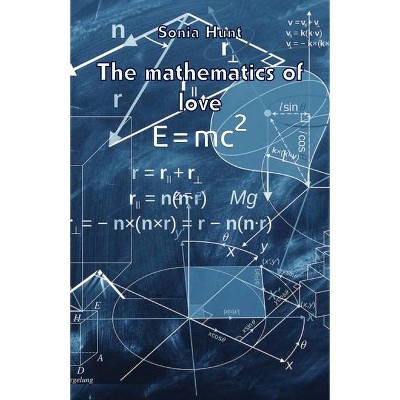Best Remembered Poems - Annotated by Martin Gardner (Paperback)

Similar Products
Products of same category from the store
AllProduct info
<p/><br></br><p><b> About the Book </b></p></br></br>The 126 poems in this superb collection of 19th and 20th century British and American verse range from famous poets such as Wordsworth, Tennyson, Whitman, and Frost to less well-known poets. Includes 10 selections from the Common Core State Standards Initiative.<p/><br></br><p><b> Book Synopsis </b></p></br></br>The 126 poems in this superb collection of 19th and 20th century British and American verse range from the impassioned "Renascence" of Edna St. Vincent Millay to Edward Lear's whimsical "The Owl and the Pussycat" and James Whitcomb Riley's homespun "When the Frost Is on the Punkin." Famous poets such as Wordsworth, Tennyson, Whitman, and Frost are well-represented, as are less well-known poets such as John McCrae ("In Flanders Fields") and Ernest Thayer ("Casey at the Bat"). Includes 10 selections from the Common Core State Standards Initiative: "The Owl and the Pussycat," "Casey at the Bat," "Jabberwocky," "O Captain! My Captain!," "Paul Revere's Ride," "Ozymandias," "The Raven," "Because I Could Not Stop for Death," "Mending Wall," and "Ode on a Grecian Urn."<p/><br></br><p><b> From the Back Cover </b></p></br></br>The 126 poems in this superb collection of 19th and 20th century British and American verse range from the impassioned "Renascence" of Edna St. Vincent Millay to Edward Lear's whimsical "The Owl and the Pussycat" and James Whitcomb Riley's homespun "When the Frost Is on the Punkin." Famous poets such as Wordsworth, Tennyson, Whitman, and Frost are well-represented, as are less well-known poets such as John McCrae ("In Flanders Fields") and Ernest Thayer ("Casey at the Bat").<p/><br></br><p><b> About the Author </b></p></br></br>Martin Gardner was a renowned author who published over 70 books on subjects from science and math to poetry and religion. He also had a lifelong passion for magic tricks and puzzles. Well known for his mathematical games column in <i>Scientific American</i> and his "Trick of the Month" in <i>Physics Teacher</i> magazine, Gardner attracted a loyal following with his intelligence, wit, and imagination. <p><b>Martin Gardner: A Remembrance <br></b>The worldwide mathematical community was saddened by the death of Martin Gardner on May 22, 2010. Martin was 95 years old when he died, and had written 70 or 80 books during his long lifetime as an author. Martin's first Dover books were published in 1956 and 1957: <i>Mathematics, Magic and Mystery, </i> one of the first popular books on the intellectual excitement of mathematics to reach a wide audience, and <i>Fads and Fallacies in the Name of Science, </i> certainly one of the first popular books to cast a devastatingly skeptical eye on the claims of pseudoscience and the many guises in which the modern world has given rise to it. Both of these pioneering books are still in print with Dover today along with more than a dozen other titles of Martin's books. They run the gamut from his elementary <i>Codes, Ciphers and Secret Writing, </i> which has been enjoyed by generations of younger readers since the 1980s, to the more demanding <i>The New Ambidextrous Universe: Symmetry and Asymmetry from Mirror Reflections to Superstrings, </i> which Dover published in its final revised form in 2005. <p>To those of us who have been associated with Dover for a long time, however, Martin was more than an author, albeit a remarkably popular and successful one. As a member of the small group of long-time advisors and consultants, which included NYU's Morris Kline in mathematics, Harvard's I. Bernard Cohen in the history of science, and MIT's J. P. Den Hartog in engineering, Martin's advice and editorial suggestions in the formative 1950s helped to define the Dover publishing program and give it the point of view which -- despite many changes, new directions, and the consequences of evolution -- continues to be operative today. <p><b> <p>In the Author's Own Words: <br></b>"Politicians, real-estate agents, used-car salesmen, and advertising copy-writers are expected to stretch facts in self-serving directions, but scientists who falsify their results are regarded by their peers as committing an inexcusable crime. Yet the sad fact is that the history of science swarms with cases of outright fakery and instances of scientists who unconsciously distorted their work by seeing it through lenses of passionately held beliefs." <p>"A surprising proportion of mathematicians are accomplished musicians. Is it because music and mathematics share patterns that are beautiful?" -- Martin Gardner
Price History
Price Archive shows prices from various stores, lets you see history and find the cheapest. There is no actual sale on the website. For all support, inquiry and suggestion messagescommunication@pricearchive.us



















